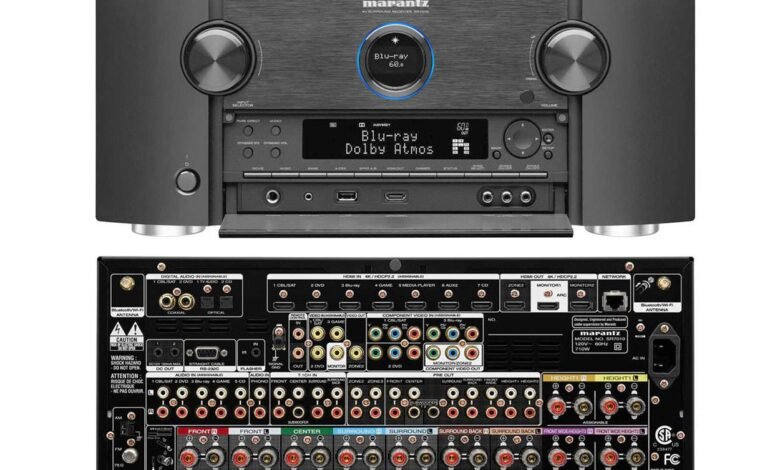Immersive Soundscapes: The Ultimate Guide to Choosing and Setting Up Theater Systems

Introduction
Theater systems transform ordinary rooms into immersive entertainment spaces where films, music, and games feel vividly alive. Whether you’re building a dedicated home cinema or upgrading a living-room setup, understanding the components, layout, and performance trade-offs helps you make choices that match your room, budget, and priorities. In this guide I’ll walk you through the main types of theater systems, essential components, practical setup and acoustics advice, plus maintenance tips that keep your system sounding its best. The aim is practical to give you clear, experience-driven guidance so you can choose and tune a system that delivers consistent, accurate sound and powerful emotional impact. The recommendations prioritize proven design principles and common-sense installation practices that AV technicians and experienced hobbyists use, so you get results that are both satisfying and dependable.
What a modern theater system includes
A contemporary theater system is more than just a TV and a pair of speakers; it’s an integrated array of components working together to recreate cinematic sound. Typical systems include a display (projector or TV), an A/V receiver or processor that decodes audio formats and routes signals, and a speaker package usually front left, center, right, surround channels, height or Dolby Atmos-enabled speakers, plus one or more subwoofers for low-frequency impact. Source devices (Blu-ray player, streaming box, game console) feed content, while calibration tools (room correction microphones, SPL meters, or built-in receiver auto-calibration) fine-tune balance. Cabling and a stable power solution matter too: quality speaker wire of appropriate gauge, HDMI cables rated for your chosen bandwidth, and a surge protector or conditioned power strip reduce noise and risk. For many setups, network capability (for streaming, firmware updates, and multiroom audio) is essential. When choosing components, consider compatibility (speaker impedance, receiver power ratings, HDMI version), room size, and your listening preference — neutral reference sound for film purists or a slightly colored, bass-forward profile for casual movie nights and music.
Choosing the right speaker layout for your room
Speaker layout determines how the audio image forms around listeners, so start by matching layout to room geometry and typical seating positions. For rectangular rooms, a classic 5.1 arrangement (left, center, right plus two surrounds and one subwoofer) is a reliable baseline; it provides clear dialogue anchoring and a convincing surround field. If you have a wider or taller room, upgrade to 7.1 for added rear channels or add height channels (5.1.2 or 7.1.4) to benefit from Atmos or DTS:X object-based formats that add overhead envelopment. Placement precision matters: the center channel should be directly below or above the screen and angled toward listeners to preserve dialogue clarity; front left and right should form an equilateral triangle with the main seat. Surrounds belong slightly above ear height and to the side/rear to create diffuse ambience rather than localized effects. Subwoofer location is flexible low frequencies are omnidirectional but placement affects bass response dramatically, so test a few spots and use room correction. If room constraints prevent ideal placement, consider on-wall or in-ceiling speakers and use acoustic treatment to compensate for reflections and bass issues.
Room acoustics and practical tuning
A great speaker system can be ruined by poor room acoustics; conversely, modest speakers often perform much better in a treated room. Address reflections first: hard surfaces (glass, bare walls, tile floors) create early reflections that smear imaging and dialogue. Use absorption panels at first reflection points, rugs on hard floors, and thick curtains over large windows to control these issues. Bass problems boominess or nulls are common and require strategic fixes: subwoofer placement, bass traps in corners, and equalization via your receiver’s room correction or a dedicated DSP. Diffusion helps maintain a lively sound without harsh echoes; place diffusers behind the listening position or on rear walls if space allows. Calibration tools matter: run the receiver’s auto-calibration, then listen and adjust manually toe-in of mains, sub level, and crossover settings often benefit from a human tweak. Keep seating distance relative to speaker size: too close and you lose soundstage depth; too far and you may not get the necessary SPL. Finally, think about ambient noise sources (HVAC, traffic) and try to reduce them quieter rooms allow clearer detail at lower volumes.
Practical installation tips and maintenance
A thoughtful installation protects both equipment and performance. Start by planning cable routes avoid running speaker cables parallel to mains power for long distances to minimize hum, and label both ends for easier troubleshooting. Use wire gauges appropriate to speaker distance: 16 AWG for short runs, 12–14 AWG for longer distances or high-power speakers. Secure speakers and mounts properly, verifying stud locations and weight ratings. For subwoofers, use isolation pads or platforms to reduce structural vibration transfer. Power protection is essential: a high-quality surge protector or power conditioner prevents spikes and can reduce audible noise. Regular maintenance includes dusting vents and connectors (power down first), checking speaker grills and driver surfaces for damage, and updating firmware on receivers and networked devices. Every few months, re-run auto-calibration after moving equipment or furniture, and keep an eye (and ear) out for changes rattles, distortion, or intermittent signals often indicate loose connections or failing components. Document your setup (photos of wiring and settings) so future troubleshooting or upgrades are quick and accurate.
Conclusion
Theater systems reward thoughtful choices: matching speakers to room, paying attention to acoustics, and installing components correctly creates an emotional, high-fidelity experience that elevates films and music. Prioritize clarity for dialogue, controlled bass for impact, and an immersive soundstage by combining proper layout with modest acoustic treatment. Routine maintenance and careful calibration preserve performance over time. Whether you’re a first-time buyer or a DIY upgrader, start with these core principles and iterate small, well-judged tweaks often yield the biggest improvements. With the right balance of equipment, placement, and room tuning, your theater system will deliver consistently engaging, cinema-style sound.
FAQs
- What’s the difference between 5.1 and 7.1 systems?
A 5.1 system uses five main channels (left, center, right, two surrounds) plus one subwoofer; 7.1 adds two rear surround channels for a wider, more immersive rear field. Choose 7.1 for larger rooms or more precise surround imaging. - Do I need a dedicated subwoofer for movies?
Yes subwoofers reproduce low frequencies that small speakers can’t, delivering rumble and impact. One subwoofer is fine for many rooms; two help even out bass response in larger spaces. - Is Dolby Atmos necessary?
Dolby Atmos adds overhead and object-based audio for increased immersion. It’s not necessary to enjoy great sound, but it enhances realism if your room supports height channels or Atmos-enabled speakers. - How important is speaker wire?
Use the correct gauge for distance and amperage: thicker wire (lower AWG number) reduces resistance on long runs. Beyond gauge, focus on secure, clean connections rather than expensive exotic cables. - Can I use a soundbar instead of a full system?
Soundbars are convenient and improve TV audio over built-in speakers, but they rarely match a properly installed multi-speaker system in imaging and dynamic range. They’re a great compromise for small rooms or tight budgets.



